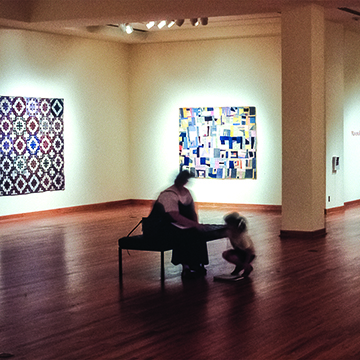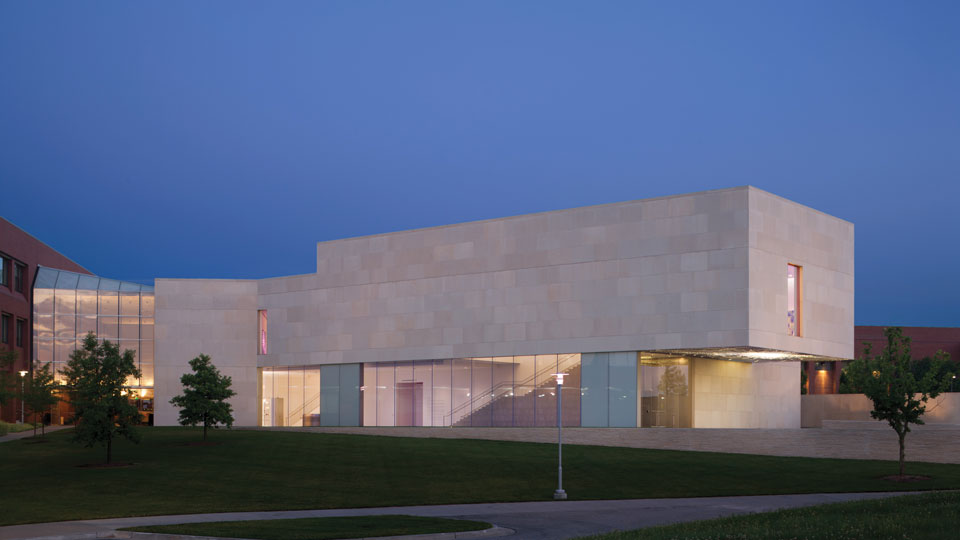Maverick Quilts
Though some elaborate quilts easily hold their own alongside the best examples of decorative art, many quilts are made with inexpensive materials for utilitarian purposes. Working with economy and within the conventions of the common quilt, however, some makers are inspired to create quilts full of lively imagination and personal expression. By exploring and deviating from conventional quiltmaking, the quilts on display possess an originality that places them in a class termed “maverick” quilts.
The quilts in this exhibition, drawn from the collection of Susie Tompkins, co-founder and owner of Esprit de Corp, San Francisco, were not selected solely for their technical merit or craftsmanship. Rather, they represent the many traditional quilts that were made by women who could not resist giving a community pattern a personal twist and identity.
As “everyday” quilts are often overlooked, they rarely possess a known history. Generally, the name of the quiltmaker is lost, as is the reason for the uniquely personalized design. We do not even know if the techniques employed are the result of misunderstanding the “normal” manner of quiltmaking, or if the changes are a deliberate approach to originality.
Blanche Ransom Parker, from Carroll County, Tennessee, made her distinctive Birds in the early 1940s. Bird quilts were common during the 1930s and 1940s. They are identifiable by a rectangular grid pattern that contains 48 embroidered state birds. Ordinarily, each block holds a bird, and the blocks are separated by lattice work. Parker’s quilt, however, is quite different; using no templates or patterns, it seems that she worked in a very spontaneous manner, with only an idea of the finished work in mind. The result is a quilt more vibrant and expressive than many traditional bird quilts. In Parker’s work, two birds face to the left, and the standard lattice work is executed with black fabric and red squares at the intersections. But the overall effect is askew; the blocks seem square, but extra bits of fabric are sewn in at different intervals in order to make it all fit.
These “maverick” quilts, however, need not be casually executed to possess an unusual vitality. Rail Fence, for example, follows a strict, careful layout. The colors of the piano-key border are perfectly ordered, yet this quilt stands apart because of the innumerable ties made of embroidery floss which cover the surface. There is no structural reason for the amount of tying on Rail Fence except for the enjoyment that the quiltmaker seemed to have derived from embellishing it.
In 1971, Jonathan Holstein and Gail van der Hoof revolutionized the way we view quilts by organizing a major quilt exhibition for the Whitney Museum of American Art in New York. Since that initial exhibition, many museums and galleries have organized shows, displaying quilts in a manner previously reserved only for paintings and more traditionally accepted art forms. Within the quiltmaking tradition, however, quilts have always existed which appear to have been made at least as much for the personal expression of the maker as for reasons of economy and fashion. As Joe Cunningham and Julie Silber, co-curators of the exhibition, conclude in their essay for the gallery guide accompanying the show, “it is uncanny how many of these quilts from a century ago prefigure by decades trends in abstract painting.”
According to Silber, “these distinctive quilts give us insights into the minds of some highly creative and witty women. They speak to us with eloquent, amusing messages from the past, messages from women who might have been our ancestors. These quilts remind us that original, unique works of art may be as close as the coverings under which we sleep.”





